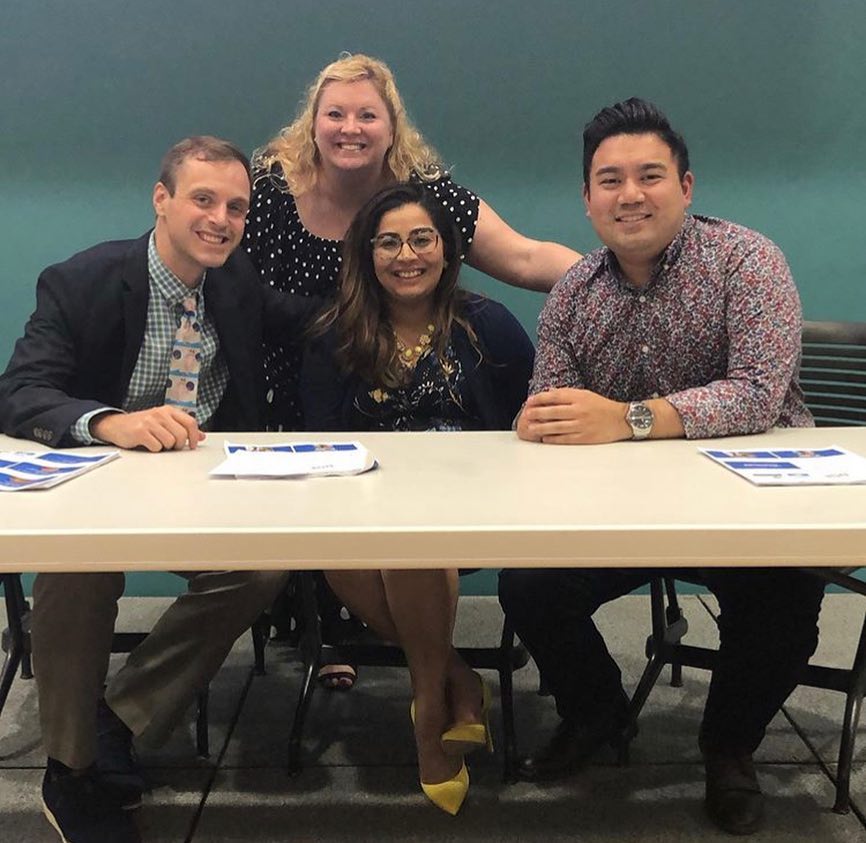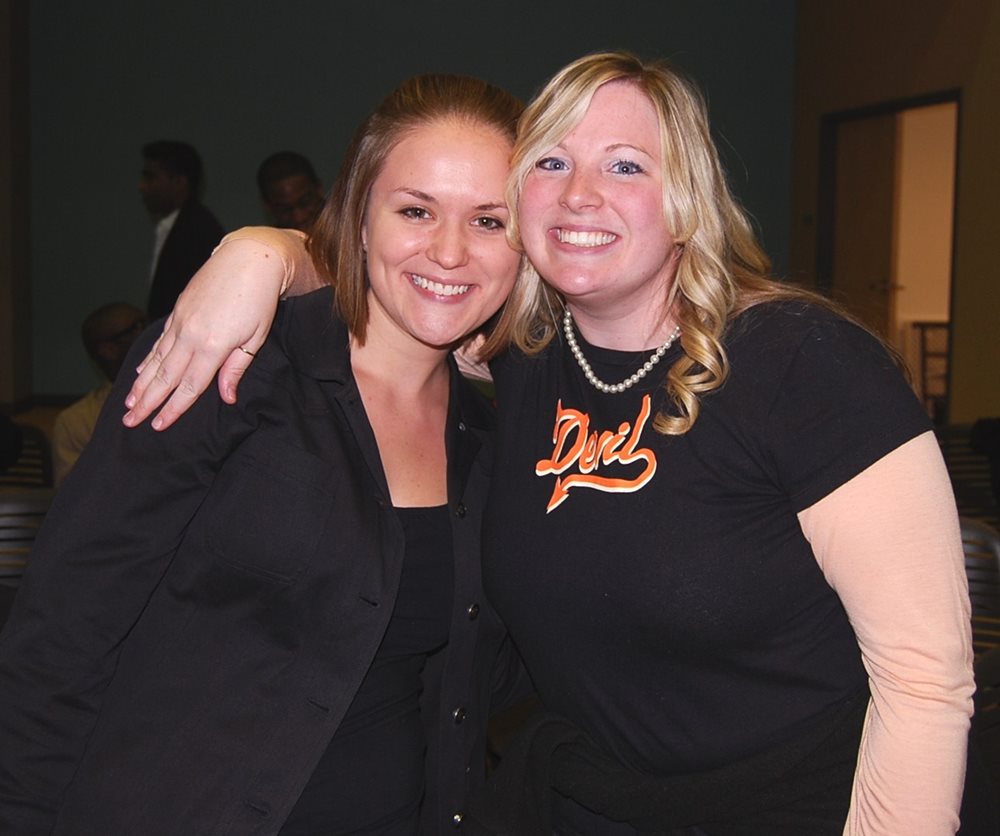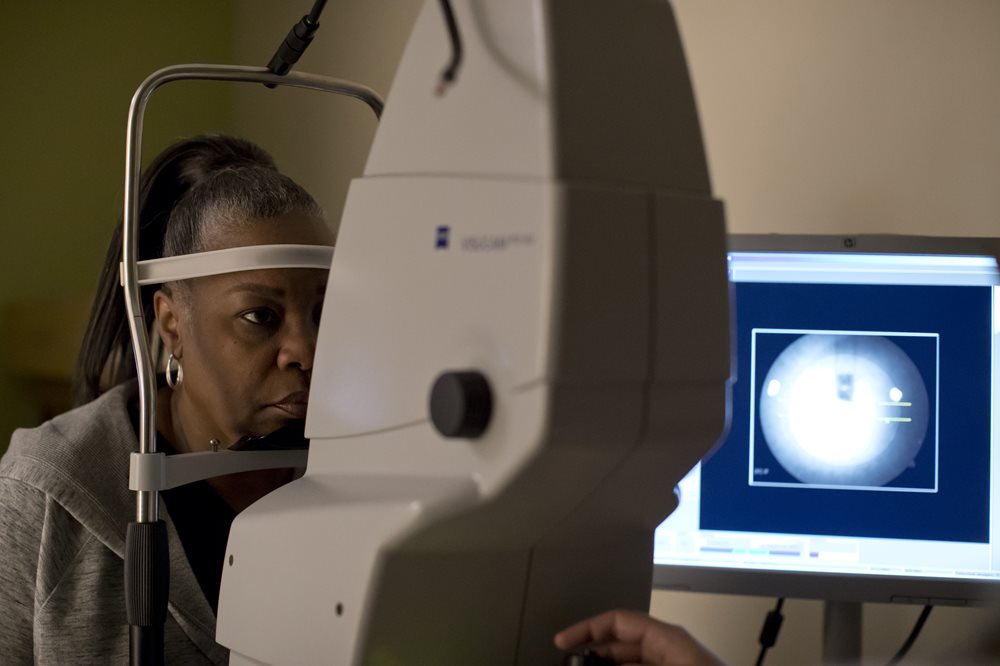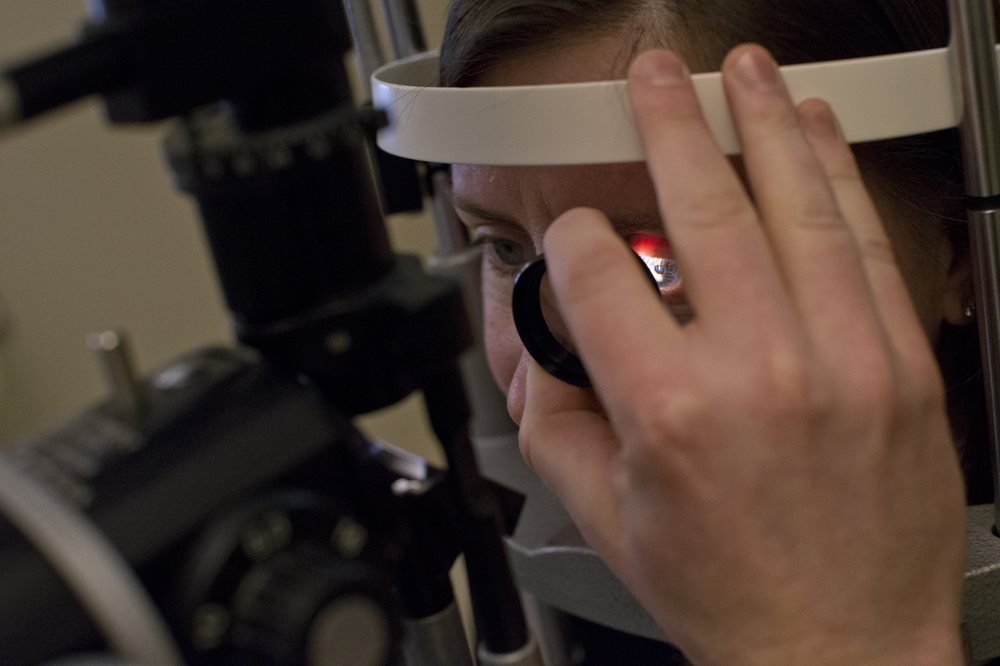Behind the Scenes at TEI: Discussion with Dr. Alissa Coyne
Alissa Coyne, OD, FAAO, Primary and Emergency Care Optometrist takes us behind the scenes at The Eye Institute (TEI).
 Dr. Coyne has been providing care as a optometry student, resident and faculty member since 2006 at TEI. Although she fills a couple of different roles, her favorite is serving as the attending optometrist in the Emergency Service, which is a walk-in Emergency Service.
Dr. Coyne has been providing care as a optometry student, resident and faculty member since 2006 at TEI. Although she fills a couple of different roles, her favorite is serving as the attending optometrist in the Emergency Service, which is a walk-in Emergency Service.
“The patients are triaged, where we ask them questions and determine if they need to be seen that day. Then we bring them back, examine them and address their issues,” said Dr. Coyne. “In that role, I work with both the resident who is in the Emergency Service at that time, as well as our third-or fourth-year students working through the cases.”
Dr. Coyne said her favorite part of the job is no two patients are going to be the same. “It's one of the reasons why I really like being in our Emergency Service - you don't know what's going to be the next patient issue in your chair. I like to be challenged, so you always have to be thinking about different diagnoses, what it could be, how you're going to rule that out, how you're going to end up treating the patient,” she said.
The Emergency Service can be very busy and patients unfortunately may end up having to wait a little bit until a room is cleared and they are able to be seen – much like you would expect in the Emergency Department of a hospital.
Dr. Coyne also sees patients in a primary care setting where all aspects of eye disease are managed to include ocular manifestations of systemic disease or a glaucoma diagnosis. The optometric interns start the exam with a history asking questions such as - What seems to bring you in today? Having any ocular complaints?
 Dr. Coyne described how the student will review medications and perform different entrance testing. They may check for a glass’s prescription. Then they look at the front surface of the eye or the anterior segment. They report to the doctors who will come in and repeat some of the testing. They’ll often dilate the patient's pupils to gain a bigger window to the back of the eye, so they can use lights and lenses to assess the ocular health.
Dr. Coyne described how the student will review medications and perform different entrance testing. They may check for a glass’s prescription. Then they look at the front surface of the eye or the anterior segment. They report to the doctors who will come in and repeat some of the testing. They’ll often dilate the patient's pupils to gain a bigger window to the back of the eye, so they can use lights and lenses to assess the ocular health.
“I think the biggest thing, especially from a patient standpoint, is to be aware of just how much we can tell about what's happening systemically or in the rest of the body, just from the eyes,” Dr. Coyne said. “Different things that can affect the eye is diabetes, high blood pressure, high cholesterol. You can also sometimes see inflammatory conditions and help diagnose systemic inflammatory conditions like rheumatoid arthritis, Crohn's disease and lupus, just to name a few.”
Often, Dr. Coyne explained, patients will come in expecting just to have their eyes examined and the student or doctors will ask about their medications, or ask them about their complete medical history.
When viewing the back of the eye, the doctors can look directly at blood vessels which reflects what's happening in the rest of the body. The eye doctor may be the first one to see changes in the back of the eye associated with diabetes.
“It's not unusual that our doctors will order blood work. Sometimes they'll order other diagnostic testing that looks at blood flow, so we can end up ordering carotid studies. As the blood flows up from the heart to the brain, to the eyes, that might be something that we're assessing based on different ocular findings. We have a terrific neuro-ophthalmic disease service that will order different testing, like an MRI or a CT scan, if we see different changes in the eye that could be associated with changes in the brain. When I say patients are coming in for their eye exam, yes, we're just looking at the eyes, but we can tell a whole lot by what's happening with that,” said Dr. Coyne.
 The patient’s medication list is also reviewed during an exam for any possible ocular side effects. In specific medications, there can be side effects that can affect vision. Dr. Coyne stressed the importance of patients taking their medications. “I'll have patients say, ‘Well, I knew I was going to see you, so I didn't take my drops.’ “Always make sure you're taking your meds," she said. “We just want to check on you and make sure that everything is going well.”
The patient’s medication list is also reviewed during an exam for any possible ocular side effects. In specific medications, there can be side effects that can affect vision. Dr. Coyne stressed the importance of patients taking their medications. “I'll have patients say, ‘Well, I knew I was going to see you, so I didn't take my drops.’ “Always make sure you're taking your meds," she said. “We just want to check on you and make sure that everything is going well.”
Dr. Coyne said one of the most rewarding aspects of her job is interacting with TEI’s patients. “I really like seeing when my patients get better, especially when I'm in the Emergency Service. That's really what I aim for - to see that success and that the management worked, that's always something that makes me happy,” she said.
Dr. Coyne emphasized the excelled optometrist who provide quality care at TEI. “We have terrific specialty clinics such as glaucoma, neuro, pediatrics, low vision/vision rehabilitation, so if we have to send you to someone for continuity of care, we can always offer that service when needed,” she said.
She then went on to stress the loyal patient base. “Overall, I want to say our patients are so terrific to both the doctors and the students. We're really fortunate they continue to come to us year in and year out. We have patients that have been coming here since its opening in the '70s,” Dr. Coyne said.
 Exams for new patients will be longer than what they are used to, but she stressed the quality of care patients receive. “I promise you that you will be getting thorough care top to bottom, no stone left unturned because we are, one, doing it in the best interest of your ocular health and your medical health, but also in order for us to help teach our students.” she said about the teaching component.
Exams for new patients will be longer than what they are used to, but she stressed the quality of care patients receive. “I promise you that you will be getting thorough care top to bottom, no stone left unturned because we are, one, doing it in the best interest of your ocular health and your medical health, but also in order for us to help teach our students.” she said about the teaching component.
The Eye Institute of Salus University (TEI) offers comprehensive exams for all ages. Scheduling a comprehensive eye exam at least once a year is an excellent first line of defense against eye disease but you should contact your doctor sooner if you notice any visual changes. Contact TEI to make an appointment at one of our practice locations.